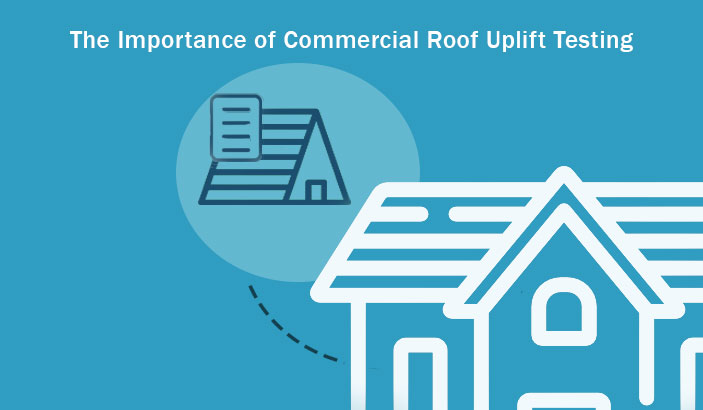The Importance of Commercial Roof Uplift Testing
Just because California doesn’t have hurricanes, this doesn’t mean that strong winds don’t blow through the state from time to time. The last thing you want is your roof blowing away because you weren’t prepared for these gusts. Weather patterns have been changing in recent years, and this could mean an increase in heavy winds across California. There is no better time to get your roof ready than right now.
Wind Uplift
Swiss mathematician, Daniel Bernoulli, made a discovery that the faster liquids are moving, the lower the pressure created will be. This same effect applies to winds and how roofing is removed as it passes by. A building acts as an obstacle to the wind, so it moves around the building, changing the pressure exerted on the surfaces as it moves by.
The direction of wind flow is associated with pressure
Wind-facing surfaces feel positive pressure
Leeward surfaces feel negative pressure
Eaves and corners feel negative pressure
Uplift occurs when pressure under the roof is greater than above it. Uplift is likely to increase as winds get stronger, such as during storms. High winds that enter a building, inflate the building, increasing the pressure under the roof. At the same time, air passing by the building outside, is reducing the pressure from above the roof. The result is stress and suction on the roof surface.
This stress weakens roofing materials and components. If uplift is greater than what the roof was designed to withstand, fasteners can be pulled out or loosened, allowing sections of the roof to be torn away. This is prevented by following building codes regarding wind uplift when constructing a roof.
What is Uplift Testing?
The DUR (dynamic uplift resistance) of a roof is determined by testing resistance against outward pressure placed upon the roof. It helps to know the DUR of a roofing system in order to best choose the assembly that can tolerate winds in your local area. The materials, fasteners, insulation, and deck are all parts that get tested, and uplift will be calculated using building height, style, and type as well as the occupancy and location of the building.
Wind uplift can be evaluated using several protocols. The most common test involves a cup-shaped rig, that is placed upon the roof, open end against roof surface. The test simulates a vacuum that removes atmospheric pressure so as to lift the roof. This suction created is given a rating which is then used to determine if your roof needs additional support to stand up to heavy winds. Uplift testing also helps you identify weak spots in the roof so repairs can be taken care of before serious damage occurs.
Uplift Testing Procedure
Wind uplift testing should be completed after a roof is installed and before the building construction is complete. There will be codes developed for the particular region and these are to be followed when designing and constructing a roof. These codes need to be met to confirm that the roof will withstand the typical winds of the area. Uplift testing should then be done every 7 to 10 years, to identify any degradation that may have occurred.
While some areas of the country see hurricanes and severe storms, no city is exempt from heavy winds. The safety of your building depends on a secure roof, so you want to make sure your property can stand up to any winds that blow through. Uplift testing helps you identify weak spots in the roof and where extra support may be needed. For any questions, concerns or uplift testing projects, call an experienced roofing company.
